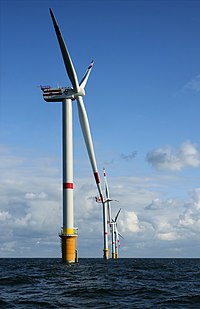
A Scheimpflug lidar used to observe insect swarming at a wind turbine
Sign Up to like & getrecommendations! Published in 2020 at "Ecological Indicators"
DOI: 10.1016/j.ecolind.2020.106578
Abstract: Abstract Wind turbines have considerable impact on flying animals, particularly bats, which are sometimes killed in large numbers by the moving rotors. A longstanding question remains why bats are attracted to wind turbines and risk… read more here.
Keywords: insects; wind; wind turbine; scheimpflug lidar ... See more keywords

Detection of the planetary boundary layer height by employing the Scheimpflug lidar technique and the covariance wavelet transform method.
Sign Up to like & getrecommendations! Published in 2019 at "Applied optics"
DOI: 10.1364/ao.58.008013
Abstract: A portable Scheimpflug lidar system has been employed for atmospheric boundary layer studies. Atmospheric backscattering signals were continuously recorded from 21 August to 28 August 2018. The covariance wavelet transform (CWT) method was utilized to… read more here.
Keywords: scheimpflug lidar; lidar; boundary layer; pbl height ... See more keywords

Implementation of a violet Scheimpflug lidar system for atmospheric aerosol studies.
Sign Up to like & getrecommendations! Published in 2018 at "Optics express"
DOI: 10.1364/oe.26.00a260
Abstract: A violet Scheimpflug lidar system employing a 1-W 407-nm multimode laser diode is developed for remote sensing of atmospheric aerosols. The laser beam of the laser diode that is transmitted into atmosphere has been investigated… read more here.
Keywords: lidar system; scheimpflug lidar; lidar; violet scheimpflug ... See more keywords

Atmospheric CO2 sensing using Scheimpflug-lidar based on a 1.57-µm fiber source.
Sign Up to like & getrecommendations! Published in 2019 at "Optics express"
DOI: 10.1364/oe.27.017348
Abstract: A molecular laser-radar system, based on the Scheimpflug principle, has been constructed and demonstrated for remote sensing of atmospheric CO2 concentrations using Differential Absorption Lidar (DIAL) in the (30012←00001) absorption band. The laser source is… read more here.
Keywords: co2; scheimpflug lidar; source; laser ... See more keywords